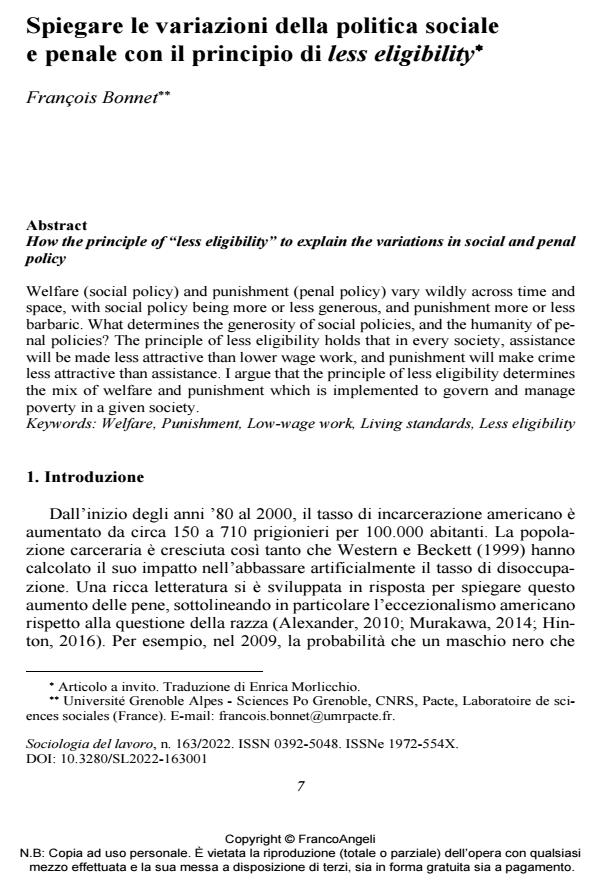How the principle of "less eligibility" to explain the variations in social and penal policy
Journal title SOCIOLOGIA DEL LAVORO
Author/s François Bonnet
Publishing Year 2022 Issue 2022/163
Language Italian Pages 19 P. 7-25 File size 223 KB
DOI 10.3280/SL2022-163001
DOI is like a bar code for intellectual property: to have more infomation
click here
Below, you can see the article first page
If you want to buy this article in PDF format, you can do it, following the instructions to buy download credits

FrancoAngeli is member of Publishers International Linking Association, Inc (PILA), a not-for-profit association which run the CrossRef service enabling links to and from online scholarly content.
Welfare (social policy) and punishment (penal policy) vary wildly across time and space, with social policy being more or less generous, and punishment more or less barbaric. What determines the generosity of social policies, and the humanity of penal policies? The principle of less eligibility holds that in every society, assistance will be made less attractive than lower wage work, and punishment will make crime less attractive than assistance. I argue that the principle of less eligibility determines the mix of welfare and punishment which is implemented to govern and manage poverty in a given society.
Keywords: Welfare, Punishment, Low-wage work, Living standards, Less eligibil-ity
François Bonnet, Spiegare le variazioni della politica sociale e penale con il principio di less eligibility in "SOCIOLOGIA DEL LAVORO " 163/2022, pp 7-25, DOI: 10.3280/SL2022-163001